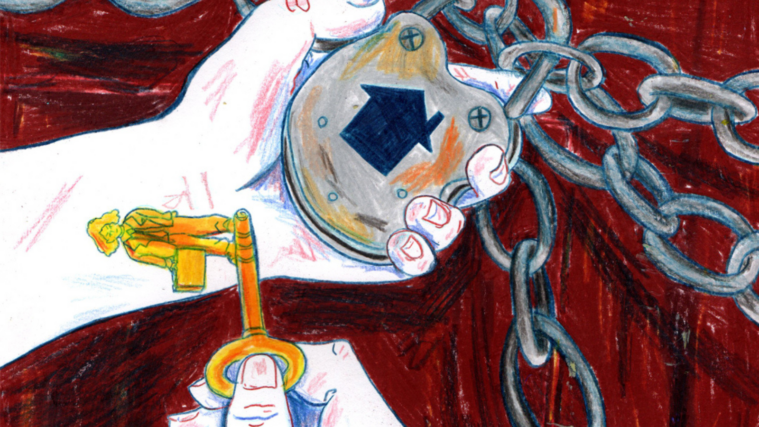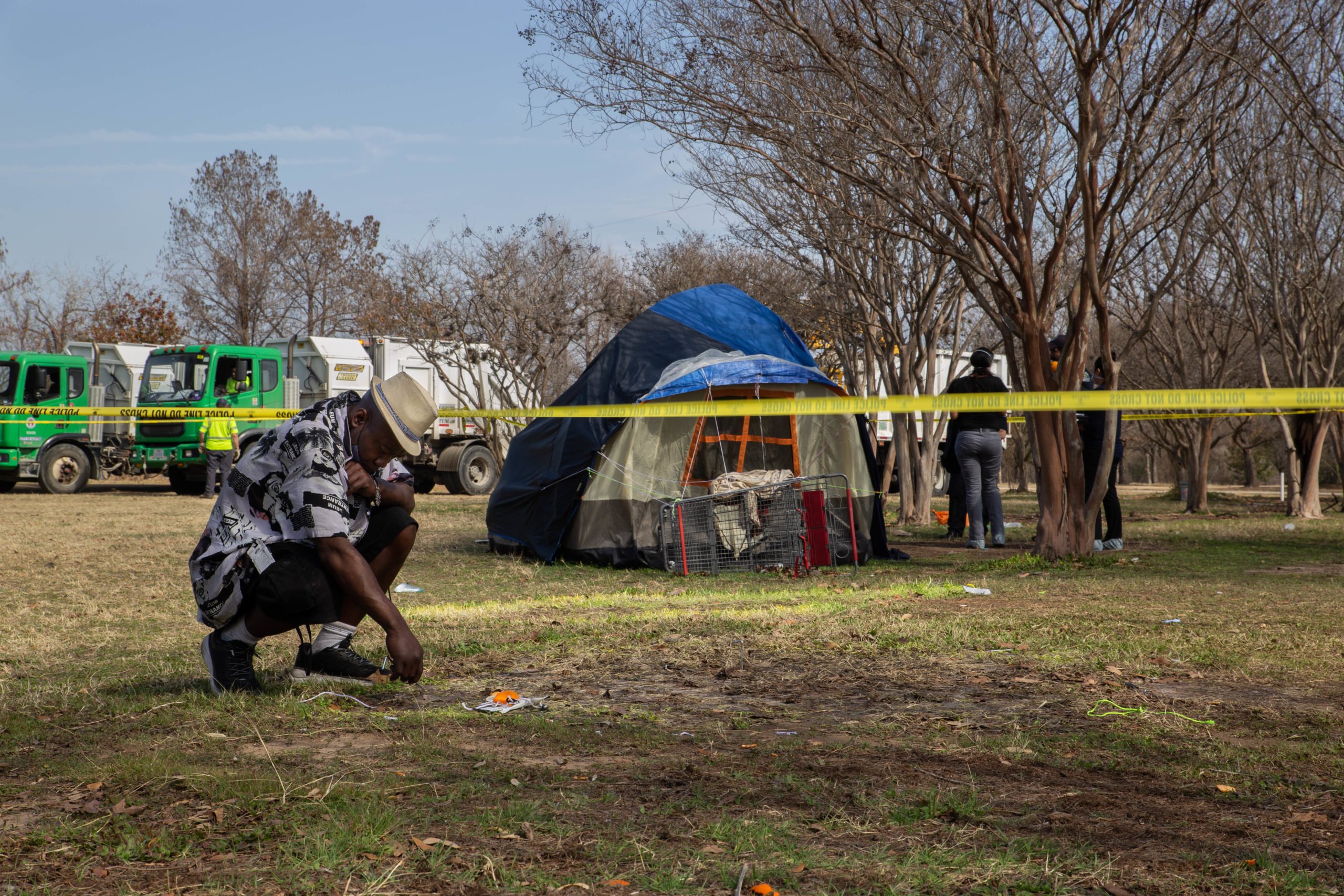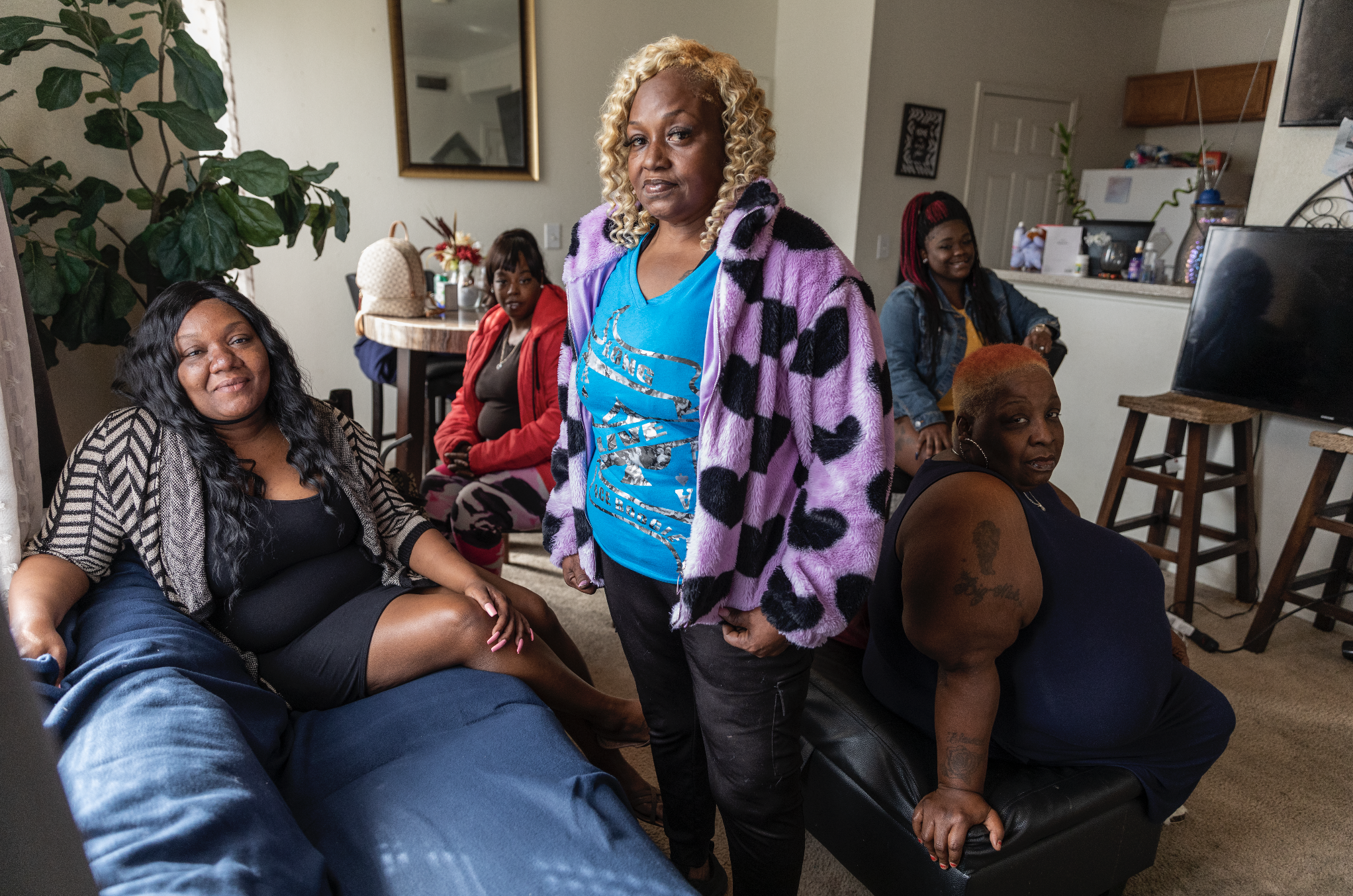Mi Barrio No Se Vende
San Antonio is planning to demolish its oldest and largest public housing project, threatening the future of a deeply historic neighborhood—one that anchors the city’s identity as the nation’s Mexican American capital.
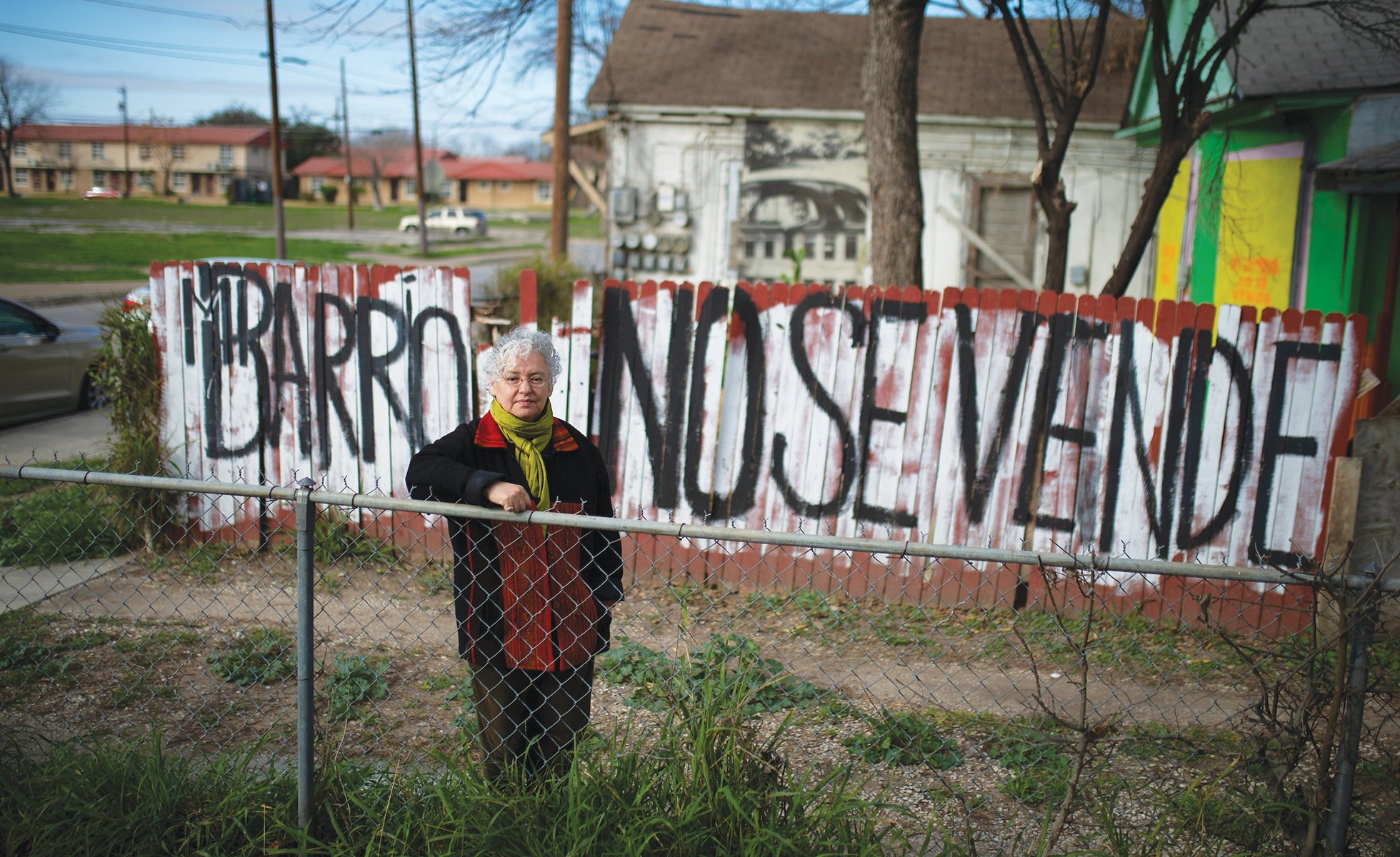
Kayla Miranda never thought she’d need public housing. Raised between Illinois and San Antonio in a Republican military family, the 36-year-old always believed hard work would be enough. Over the years, she helped run a construction company, worked at a post office, and managed gas stations. But starting in 2011, things took a turn: Her parents’ house was foreclosed on, her husband was arrested and they divorced, and her son was diagnosed with autism. Bouncing from friends’ couches to motels, Miranda began missing work as her son’s school peppered her with calls about his increasingly frequent meltdowns. Disaster loomed. Then, after a year and a half on a waitlist, a space opened for her at one of San Antonio’s public housing projects in mid-2017.
“It’s a safety net, thank God,” Miranda tells me when I visit her 80-year-old cinder block apartment complex in January. It’s not an ideal place: The bedrooms scarcely fit a queen mattress, there’s no central air, and the roaches are resilient. But Miranda, a mother of three who also cares for her 3-year-old nephew, pays only $168 a month in rent. And after two and a half years here, she feels connected to her neighbors. For her, it’s a home worth fighting for.
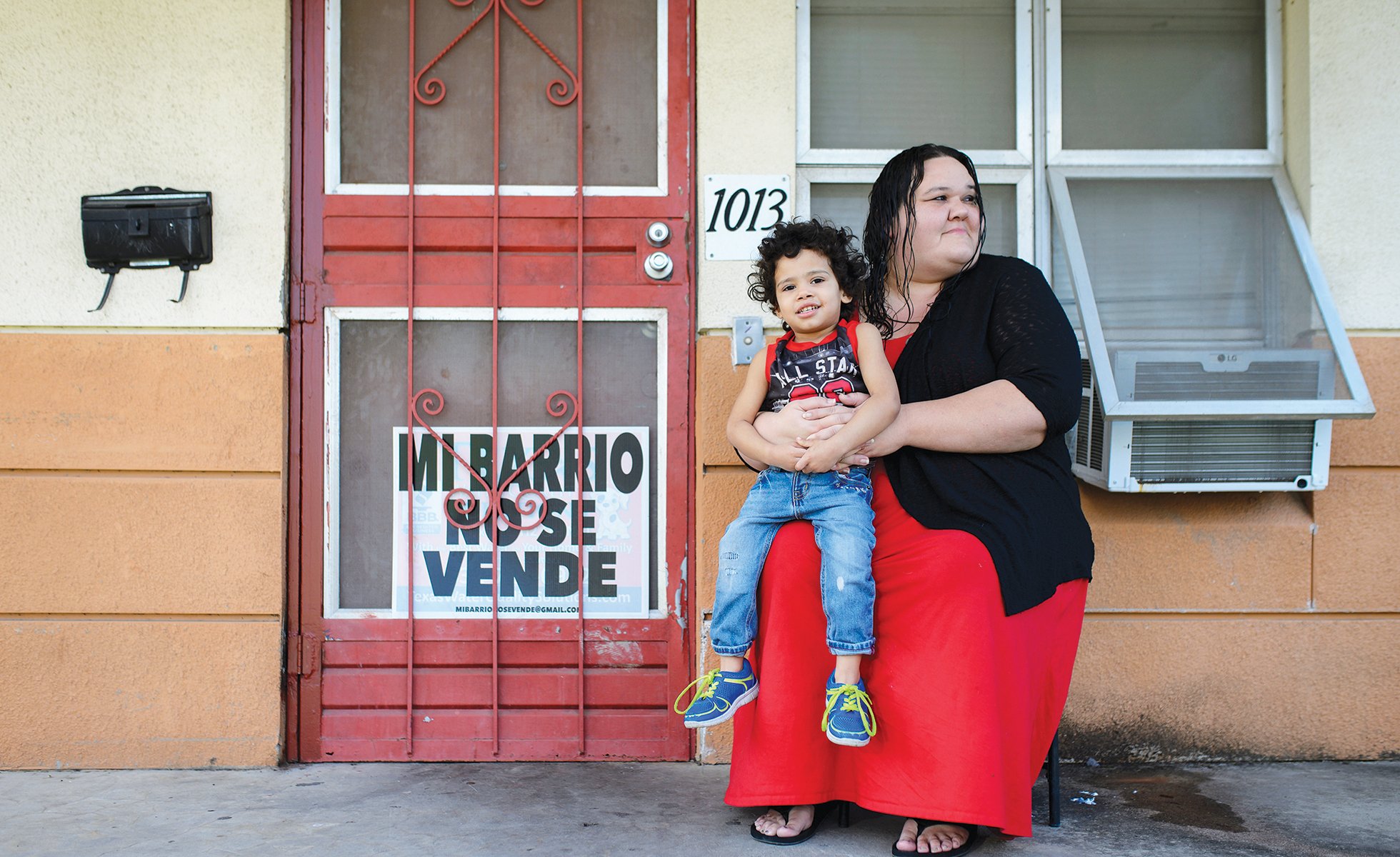
Miranda’s home is the Alazán-Apache Courts, San Antonio’s largest and oldest public housing development. Built between 1939 and 1942 on the city’s poor and overwhelmingly Hispanic West Side, the courts consist of 685 low-rise apartments split into clusters on either side of Guadalupe Street, less than a mile from downtown. The tenants are extremely poor: The average family’s income is less than $11,000 a year, and the area sees more violent and property crimes than most parts of the city. But the courts have also long been a hub of Mexican American culture, as generations of West Siders have moved in and out of the development, including famed conjunto performers and future scholars. Now the San Antonio Housing Authority (SAHA) plans to wipe the courts, and their history, away.
SAHA, a quasi-governmental entity that manages the city’s public housing and Section 8 housing choice voucher programs, announced plans in 2017 to demolish Alazán-Apache and replace it with a mixed-income development—part of a decades-long trend of tearing down and privatizing public housing in the face of anemic federal funding. SAHA plans to first demolish the 501 apartments north of Guadalupe Street, before moving south to the second group and eventually to other public housing projects on the West Side. Using federal tax credits and tax-exempt bonds, the housing authority will build new apartments meant to draw tenants with varying incomes. Some current Alazán-Apache residents should be able to return to the new buildings, while others will use vouchers to move elsewhere in the neighborhood or city. Demolition could begin within two years.
For SAHA, the redevelopment is a chance to replace aged buildings it considers obsolete and disperse a community it deems “burdened with illicit activities, difficult to manage” and suffering from “a negative stigma.” But for some residents and community activists, who fear the potential displacement of more than a thousand people, the project looks like a forerunner of gentrification.
“The West Side is home; everybody knows everybody, so you stop at the gas station and you see 10 people you know. If they bring all these new people in … the whole area changes.”
Miranda’s concerns about the redevelopment are manifold. Moving is stressful and costly, and her kids are attached to the apartment—her daughters have covered their room in glow-in-the-dark stars. If she takes a Section 8 voucher, she worries she won’t find a decent apartment nearby where she can use it. In Texas, landlords freely discriminate against Section 8 tenants, and there’s little cities can do about it. Miranda’s had troubles with SAHA, including maintenance and pet fees she says were unjust, but she feels there’s more of a process to resolve disputes than on the private market.
If she got the chance to return to the new mixed-income development, she worries about the neighbors: Her son has fits, during which he yells and sometimes hits his head against the wall. “My neighbors understand; they all have kids too, and they don’t report me to the office,” she says. But who knows what could happen if wealthier tenants move in?
After 20 years in the area, Miranda is also a West Side defender. Wedged behind her front door’s iron grillwork, a sign reads “Mi Barrio No Se Vende”—My Neighborhood Is Not for Sale. “The West Side is home; everybody knows everybody, so you stop at the gas station and you see 10 people you know,” she says. “If they bring all these new people in, they change the demographic, the schools change, the businesses change, the whole area changes.”
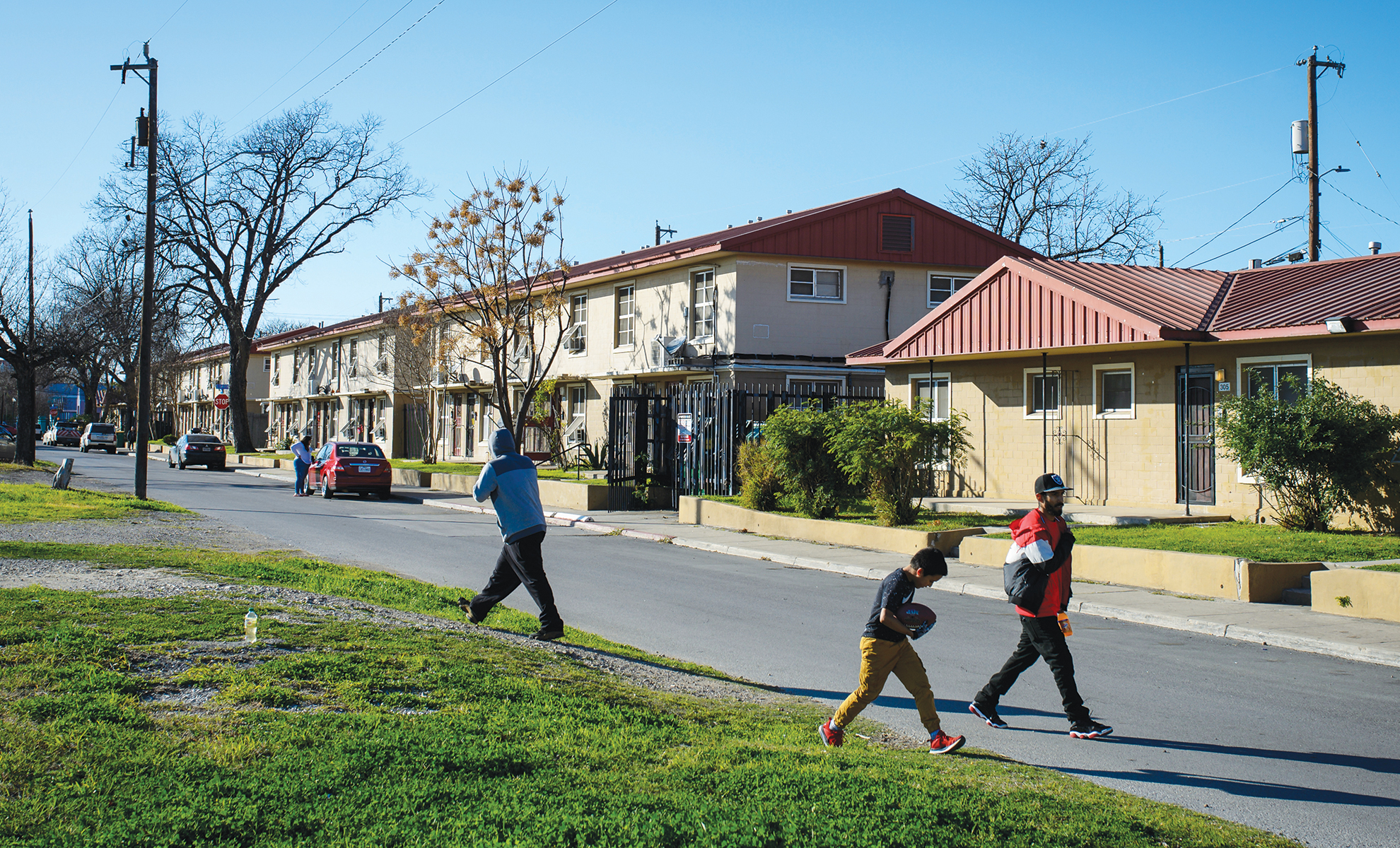
Miranda’s views aren’t universal among Alazán-Apache tenants. In 2017, SAHA conducted a survey that, according to a spokesperson, suggested the majority would happily take a voucher and move elsewhere.
Jeannette Rico, a friend of Miranda’s, has numerous complaints about the courts: There’s mold, her apartment has been broken into, and she regularly hears gunfire and witnesses drug deals. Unlike Miranda, the 30-year-old Rico is rooted in San Antonio’s projects: She grew up in the Cassiano Homes, a 499-unit complex about a mile from Alazán-Apache. Her grandmother still lives at “the Cassianos,” as did her father until he was shot and killed in the early ’90s, when San Antonio was the state’s drive-by capital. Her view of the area is, understandably, more jaundiced. “We’re in the twilight zone here: Things never change; we’re still treated like poor Mexicans, and nobody’s ever coming out of it,” she says. She believes bringing in whiter, wealthier people could improve the neighborhood.
A mother of two with a third on the way, Rico cares for her own kids and scrapes together a little money babysitting. Her rent is just $26 a month. Still, she’d gladly take a voucher and leave the area. “For me, it’s mostly about my son,” she says. “He’s already 14; my dad died when he was 18 years old. I’m afraid he’s going to get involved with the wrong people.”
But the debate over Alazán-Apache is about more than just the project’s current residents. It’s about the future of a deeply historic neighborhood—one that anchors San Antonio’s identity as the nation’s Mexican American capital.
Head west from downtown on the Guadalupe Street Bridge and a brightly painted mural greets you: “Bienvenidos al Westside!” The area’s historic core—encircled by Commerce and Laredo streets, I-10 and Zarzamora—hosts dozens more murals portraying Chicano activists, Mexican revolutionaries, Aztec pyramids, and a local kid lost to gang violence. Churches and taquerías abound—as do abandoned storefronts and houses. The West Side’s main zip code is 93 percent Hispanic with a 40 percent poverty rate.
The neighborhood’s poor have long suffered due to governmental disregard. Starting in the 1930s, the area was redlined, and racially restrictive covenants limited Latinos to the West Side. Many lived in corrales, clusters of shacks arrayed around common pit privies. A lack of clean water and proper sewerage left residents vulnerable to disease: From 1939 to 1941, San Antonio had the highest death rate from tuberculosis among the nation’s large cities, with fatalities concentrated on the West Side.
Facing this crisis, a local priest, Carmelo Tranchese, successfully lobbied First Lady Eleanor Roosevelt to bring public housing—then a fledgling New Deal initiative—to San Antonio. Two all-black projects were built, plus one for Anglos. Alazán-Apache, the first and largest development, was for Mexican Americans only. The apartments came with kitchens and private bathrooms, linoleum floors, refrigerators, and stoves—all conveniences many of the new residents had lived without. Older West Siders still summon sweet memories of the place.
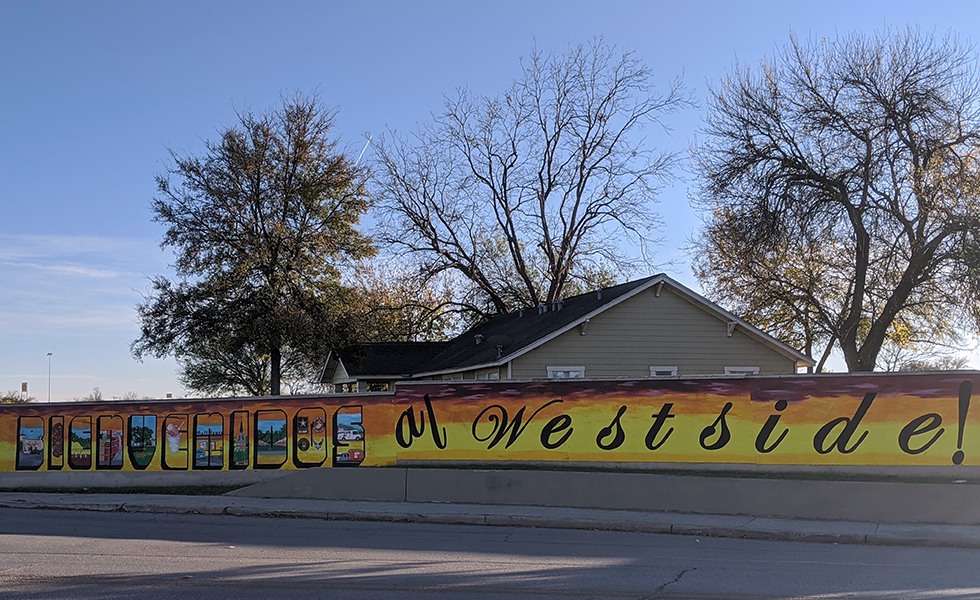
In her exuberant Spanglish, Blanquita Rodríguez, an 86-year-old ranchera singer with Las Tesoros de San Antonio, tells me of her childhood at the courts. “I grew up muy contenta; era muy bonito, m’ijo. It was like a big family,” she says, recalling the complex’s large hedges and her days performing at the nearby Guadalupe Theater. “I have a lot of beautiful memories, chatting on the porch. Nadie te molestaba. You needed a couple tortillas, you went and knocked on your neighbor’s door.”
Still, poverty persisted in the surrounding neighborhood. In 1997, an 89-year-old man died in a blaze just north of Alazán-Apache after lighting firewood in a metal washtub to heat his tin-roofed shack. The city then condemned the building, along with a dozen more 1930s-style units nearby. But alongside hardship, art and political activism flourished. The West Side has been home to renowned singers including Eva Garza and Lydia Mendoza; the radical labor organizer Emma Tenayuca and voting rights pioneer Willie Velázquez; former HUD Secretary Henry Cisneros and the Castro twins; historians David Montejano and Ignacio M. García; and poets Pablo Miguel Martínez and Carmen Tafolla.
“San Antonio is the mecca of Mexican Americans,” the writer Bárbara Renaud González, who’s called San Antonio home for 20 years, tells me. “And the West Side is la neta. It’s el hueso, the backbone of the city … the center of the circle.”
Present-day San Antonio, population 1.5 million, is 64 percent Hispanic with a 19 percent poverty rate. Fast-growing and poor, the city is becoming less and less affordable. From 2008 to 2018, median rent jumped 16.5 percent, while renter income grew only 3.5 percent. One fail-safe for the city’s poor is its public housing. With some 6,000 units, San Antonio has nearly double the public housing stock of any other Texas city. Besides Miami, it has more public housing than any city in the southern United States.
San Antonio owes its large public housing stock to Tranchese, the priest, and New Deal-era Congressman Maury Maverick, says John Henneberger, co-director of the nonprofit Texas Housers. The city should treat its stock as a precious resource, Henneberger says, because public housing is the best form of housing assistance for “the poorest of the poor,” thanks to greater tenant protections and management that’s used to working with the most destitute.
“San Antonio is the mecca of Mexican Americans. And the West Side is la neta. It’s el hueso, the backbone of the city … the center of the circle.”
Starting with the Nixon administration, the federal government launched a war of attrition on public housing, virtually ending new construction and starving housing authorities of funds for repairs and management. Housing assistance shifted to vouchers and tax incentives—programs that cut the private sector in on the deal. The war has been bipartisan: Under the Clinton-era HOPE VI program, the government demolished some 100,000 units of public housing, scattering communities with little opportunity to return.
Obama tried to soften the approach. Under his Rental Assistance Demonstration (RAD) program, some housing authorities have partially privatized their public housing, but the program requires a right-to-return for any displaced residents. (Austin and El Paso have transitioned almost all their stock through RAD, but SAHA hasn’t used the program, for reasons the agency declined to explain.) Advocates say the effects of RAD need further study, but, fundamentally, Obama didn’t change the public housing paradigm. For nearly 50 years, privatization and demolition have been the watchwords of federal policy, leaving local housing authorities with little choice but to play along. That makes San Antonio special. The Alamo City has held onto a sizable public housing stock, and with a gentrification crisis now looming, that housing takes on new significance.
Gentrification is less advanced in San Antonio than in Austin or Houston. Still, San Antonians close to downtown have felt the squeeze: Parts of the near North and South sides began gentrifying decades ago. In 2010—with the city’s population sliding into suburbs outside Loop 1604—then-Mayor Julián Castro declared his “decade of downtown,” a program of tax giveaways and fee waivers that lured billions of dollars in investment into the urban core. That ratcheted up development pressure on surrounding neighborhoods. In 2014, hundreds of people in a trailer park south of downtown were displaced; three residents died after moving, which family members connected to the relocation. Some neighborhoods on the historically black East Side have seen property values skyrocket.
The West Side is in the embryonic stages of gentrification. Speculators have bought up properties, including houses condemned for code violations, and some homeowners are receiving relentless calls and mailers with offers to buy their homes. Airbnb rentals have also cropped up. On a listing for a house going for $70 a night a half-mile from Alazán-Apache, the renters’ reviews are telling. “Look into area. A bit ghetto and full of homes needing TLC. … Worth the stay for the location!” one wrote.
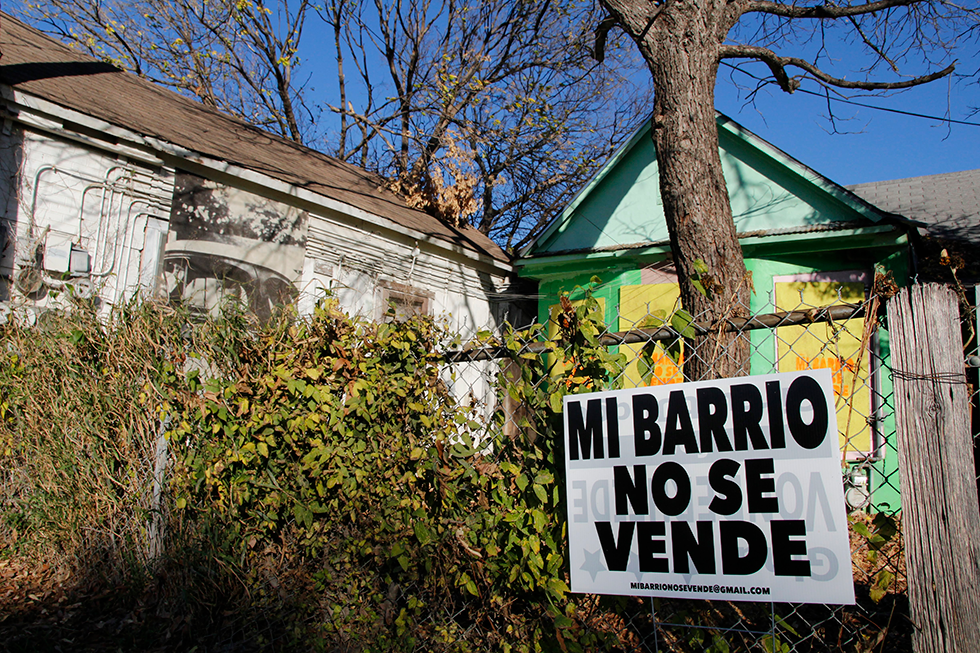
“Capital is circling,” says Christine Drennon, a Trinity University urban studies professor. Drennon studied the 2014 conversion of an East Side public housing project into a mixed-income development; only about 15 percent of households had returned as of 2018. “There’s investment money around, and it’s looking for where to land.”
The redevelopment of Alazán-Apache is one of multiple projects looking to land on the West Side. The University of Texas at San Antonio plans to quadruple its downtown campus, including an expansion westward, suggesting a boom in demand for student housing. Just north, there are plans to convert an abandoned industrial complex into a mixed-use development.
The West Side has defenses against gentrification, including vestiges of racist urban planning meant to isolate the neighborhood: railroad tracks, a highway, a county jail, and the 1,700-person Haven for Hope homeless shelter. But some see Alazán-Apache as the real hurdle, the levee holding back the flood of Anglos and better-off Latinos.
“Alazán acts as a market barrier to the strong market downtown moving west,” says Noel Poyo, director of the San Antonio-based National Association for Latino Community Asset Builders. “If you’re a low-income homeowner about five blocks west of Alazán, you should be worried.”
Perhaps the most radical defender of the West Side’s culture is Graciela Sánchez. Born and raised in the neighborhood, the 59-year-old directs the Esperanza Peace and Justice Center, a preservationist nonprofit that runs a meeting space and arts cooperative off Guadalupe Street. For Sánchez, the proposed demolition of Alazán-Apache is part of a trend: She recalls the National and Zaragoza theaters, both gone; a diesel station that used to be La Gloria dance hall; and the former Univision building, where Spanish-language television in the United States was born. In the 1970s, her own childhood home was razed during the national demolition program known as urban renewal—famously dubbed “Negro removal” by the writer James Baldwin. Taken together, Sánchez sees a process of “cultural genocide.”
On a Wednesday morning in December, Sánchez takes me on a driving tour of the West Side. Every few blocks, she points to the home of someone she knows; we pass her parents’ house and the street where her mother was born. On blocks that escaped urban renewal, she gushes over the old shotgun houses, tiny and nearly touching one another, reminiscent of New Orleans. She laments the proliferation of empty lots, often from homes condemned for code violations. For her, the neighborhood is “sacred.”
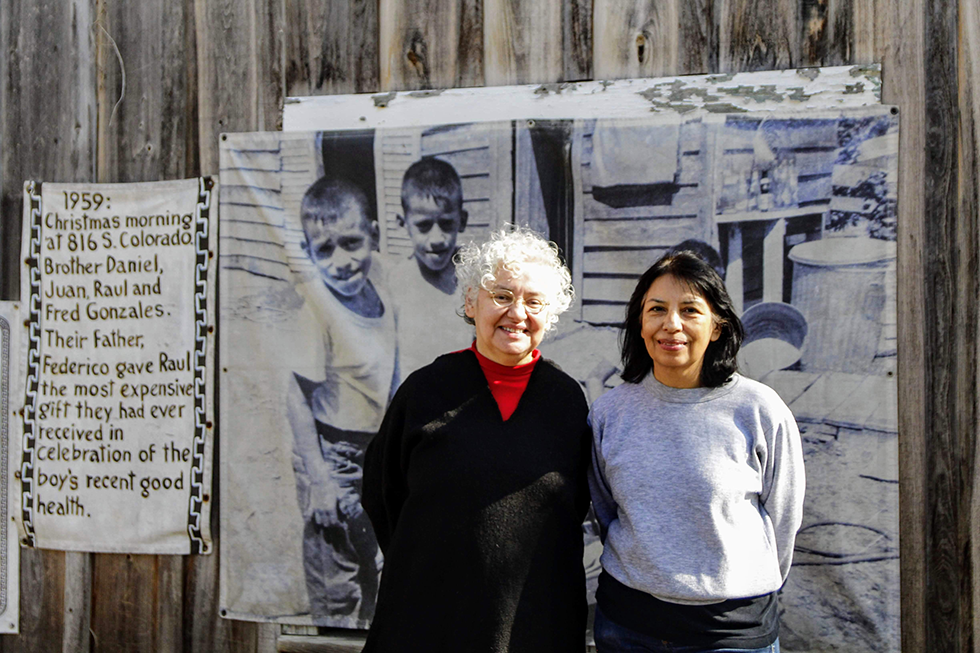
On the West Side, Sánchez sees deep roots. She emphasizes that some residents descend from Native Americans who lived at the San Antonio missions. Often, she seems to be fighting a historiographical battle for her barrio: Sánchez contests the idea that the West Side has ever been a “bad” place to live, arguing the century-old narrative comes mostly from outsiders with an agenda. “We’ve heard many stories from our elders,” she tells me. “We were poor, but we had everything. We felt safe; we knew each other. We would share oranges, figs from the trees, eggs from the chickens. The curanderas were here.”
Sánchez would like to see Alazán-Apache—where she remembers taking dance classes as a child—improved but largely preserved. In a bid to promote the project’s history, her organization has tied black-and-white photographs of former Alazán-Apache residents to fences around the complex. The problem, Sánchez says, is “there’s profit to be made in tearing buildings down and building new, cheaply made housing.”
SAHA, on the other hand, says fixing up Alazán-Apache would be prohibitively expensive. Better to bring in a private partner and start fresh, the agency says, building bigger apartments with new plumbing and wiring—a plan it says residents support. “The living conditions are not up to par with what the rest of us have; everything that we’ve done to try to maintain them is just putting a Band-Aid,” says Lorraine Robles, SAHA’s director of development services and neighborhood revitalization. “I mean, you can fix anything, but it depends on how much money you have.”
“Deconcentrating poverty is a smokescreen. It camouflages forced relocation of low-income households.”
The Alazán-Apache redevelopment, however, is about more than architecture and engineering. It’s an ideological endeavor. SAHA aims to turn public housing into mixed-income developments in an effort to “deconcentrate” poverty—a concept that’s prevailed in urban housing policy for decades despite heated academic criticism. To address social ills in segregated neighborhoods, the story goes, the government should scatter the poor into better-off areas, where they’ll find stronger institutions and positive middle-class role models. Moving to wealthier neighborhoods does generally help young children, but many scholars see poverty deconcentration as a fig leaf for dispossession.
“Deconcentrating poverty is a smokescreen. It camouflages forced relocation of low-income households,” Edward Goetz, an urban planning scholar at the University of Minnesota, wrote in a 2014 article. Under programs like HOPE VI and urban renewal, he observes, displaced public housing tenants simply wound up in other poor, segregated areas. “The impact for residents is not necessarily a deconcentration of neighborhood poverty,” Goetz tells me. “Instead, what you have is new real estate opportunities.”
Mixed-income apartment complexes also have a spotty record. “Most research has demonstrated that these don’t work that well for the low-income families,” Goetz says. There’s little cross-class interaction between the residents, and to please market-rate tenants, property management often polices behavior associated with poorer residents, banning things like public-area couches, barbecuing, or loitering. “There are these not-well-veiled attempts to control behavior,” Goetz says, “so this can be an alienating experience.”
SAHA is aiming for a softer touch than early demolition programs. The agency first sought funding through the Obama-era Choice Neighborhoods Initiative—which requires a roughly one-for-one replacement of public housing—but the application was denied. Still, SAHA is currently building three tax-credit mixed-income housing developments on the West Side, which should provide a nearby alternative for some Alazán-Apache residents. Some should also get to return to the buildings that replace Alazán-Apache. That complex will be owned by a private entity, but SAHA will retain an ownership interest. To mitigate gentrification in the surrounding neighborhood, Robles says, SAHA would work with the county appraisal district to try to limit property value spikes.
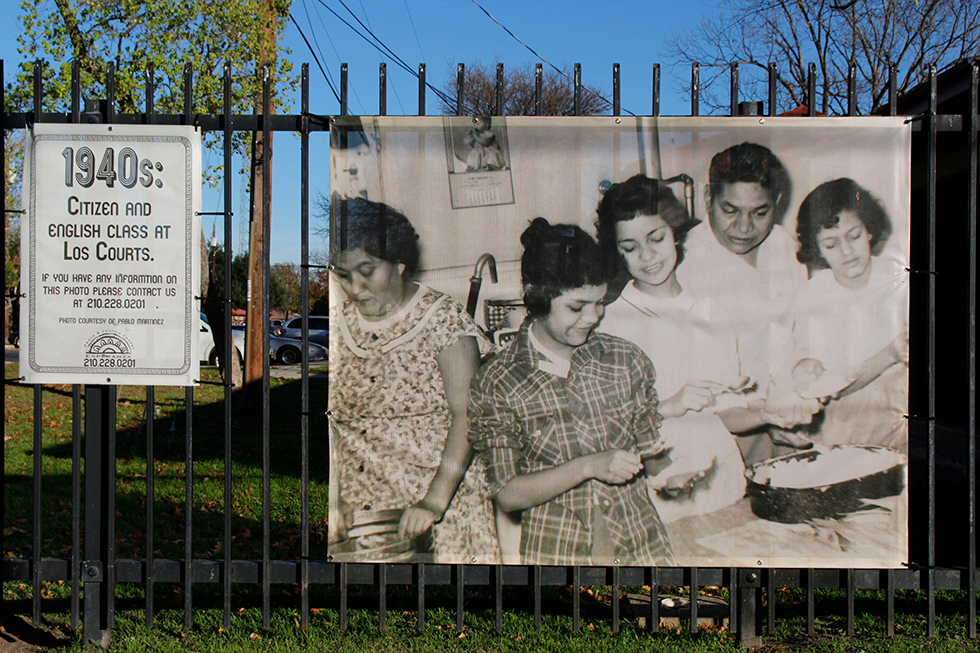
But the fact remains: In a city facing an affordable housing crunch, SAHA is set to reduce public housing. The initial Alazán-Apache proposal from NRP Group, SAHA’s private development partner, is to replace 501 units with 648 units, 66 of which would be public. Most of the other units would be pegged to site-specific vouchers or otherwise kept below market-rate rent—though Robles says the numbers could change.
The plan also depends, Robles acknowledges, on many of the current residents accepting Section 8 vouchers as an alternative to public housing. That’s likely, but advocates warn that vouchers can be a poor substitute. Without extensive help finding an adequate apartment, Section 8 tenants often wind up in shabby apartments run by negligent landlords—and switching from public housing to Section 8 can even lead to homelessness. Amelia Adams, a Texas Housers researcher, has found that many voucher-holders in San Antonio live in complexes with eviction rates as high as 60 percent.
At this point, stopping the Alazán-Apache redevelopment looks unlikely. The area’s city council member backs it, and the SAHA Board of Commissioners supports it with just one dissident voice. Sofía López, a board member who also co-authored a national pro-public housing proposal called the Homes Guarantee, has counseled patience. Currently, housing authorities have little choice but to turn to the private sector for investment capital, but with a resurgent left wing of the national Democratic Party, new proposals are surfacing. U.S. Senator Bernie Sanders and Congress members Alexandria Ocasio-Cortez and Ilhan Omar have all unveiled massive spending proposals for both repairs and building new public housing. SAHA should hit pause, López says, as progressives finally “breathe a bit of hope into the debate.”
For Alazán-Apache residents and surrounding neighbors, much will depend on the details of SAHA’s execution, the demands of the market, and the vagaries of federal and local policy. But Sánchez, the Esperanza director, knows exactly how she feels about current proposals. “Everywhere, the poor get pushed farther and farther away,” she says. “Like a lot of communities of color, we’ve been experimented on. … This is another bullshit experiment.”
That may sound fatalistic, but behind her words, history looms.

